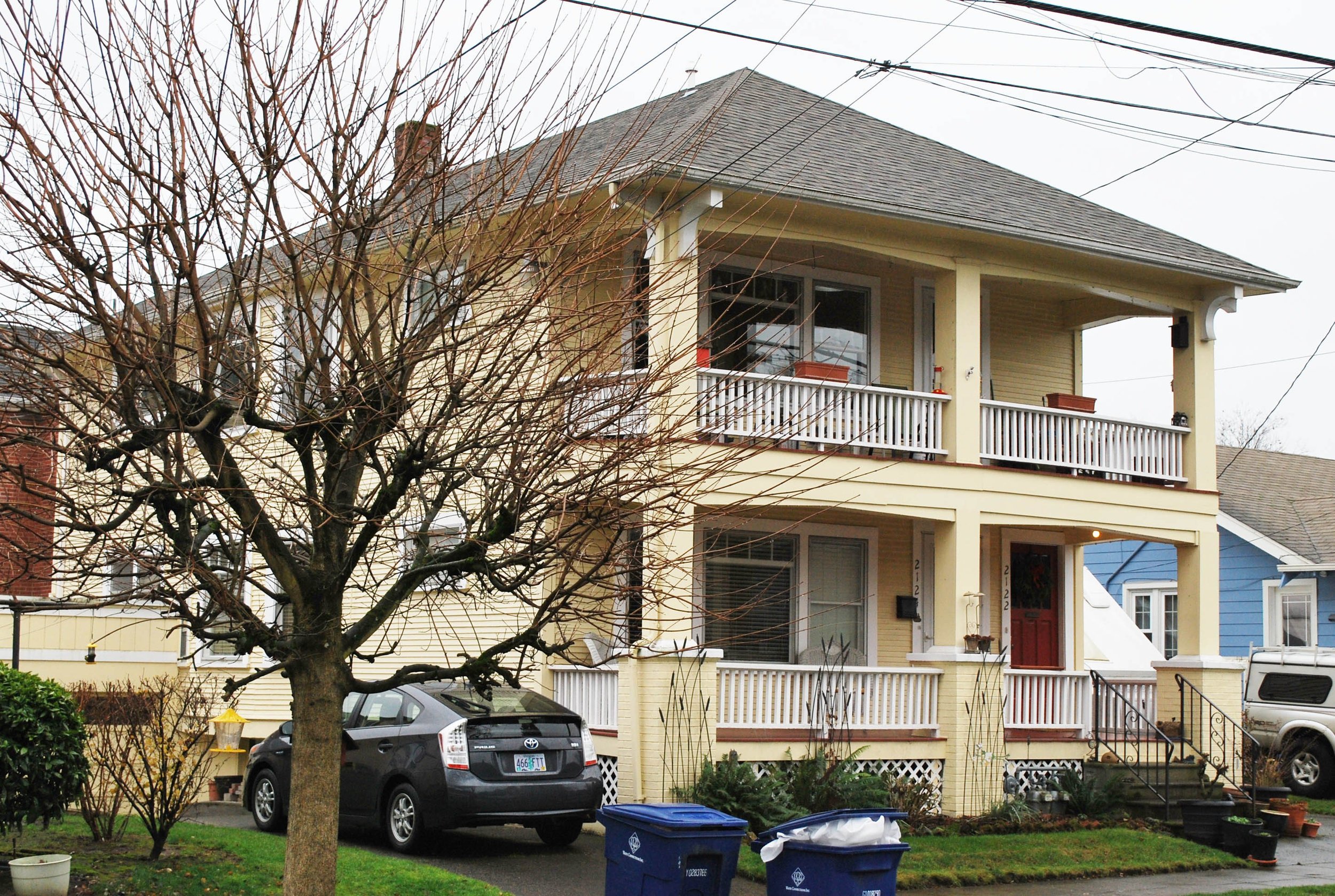Building Data:
Neighborhood: Boise
Year Built: 1911
Typology: Duplex-Stacked
Units: 2
Stories: 2
Site Area: 5,000sf
Building Area: 2,472sf
FAR: 0.5:1
Density: 17.5 du/net acre
Zoning: 1 (1du/5000sf of site area)
Is it Legal? YES
4017-4018 NE Rodney is an excellent example of the classic stacked duplex typology. While this one appears to have been constructed as a duplex, many of Portland’s stacked duplexes were the result of conversions. Many of these conversions occurred during WWII when the city was experiencing a severe housing shortage due to the influx of war industry workers. Note that unlike today, the newcomers were, by and large, blue collar workers.
This type of duplex has trade offs. The ground floor unit has more access to the yard than the top unit, but in many cases, a usable attic is available to the second floor. Sound transmission through the floor can be an issue. On the upside, the floor plans are pleasant and efficient, with much less space wasted on redundant circulation. We’d wager these units’ interiors are pretty similar to single story bungalows of the same era. Additionally, the shared yard and shared entry facilitate community.
Contemporary side-by-side duplex.
Very few of these seem to get built today. In fact, we have located only one contemporary stacked duplex thus far. Developers seem to favor side-by-side duplexes. These can be sold as single family attached houses, which are an easier deal for small unsophisticated builders who do not want to build and hold. They are also easier to park.
Site Plan























